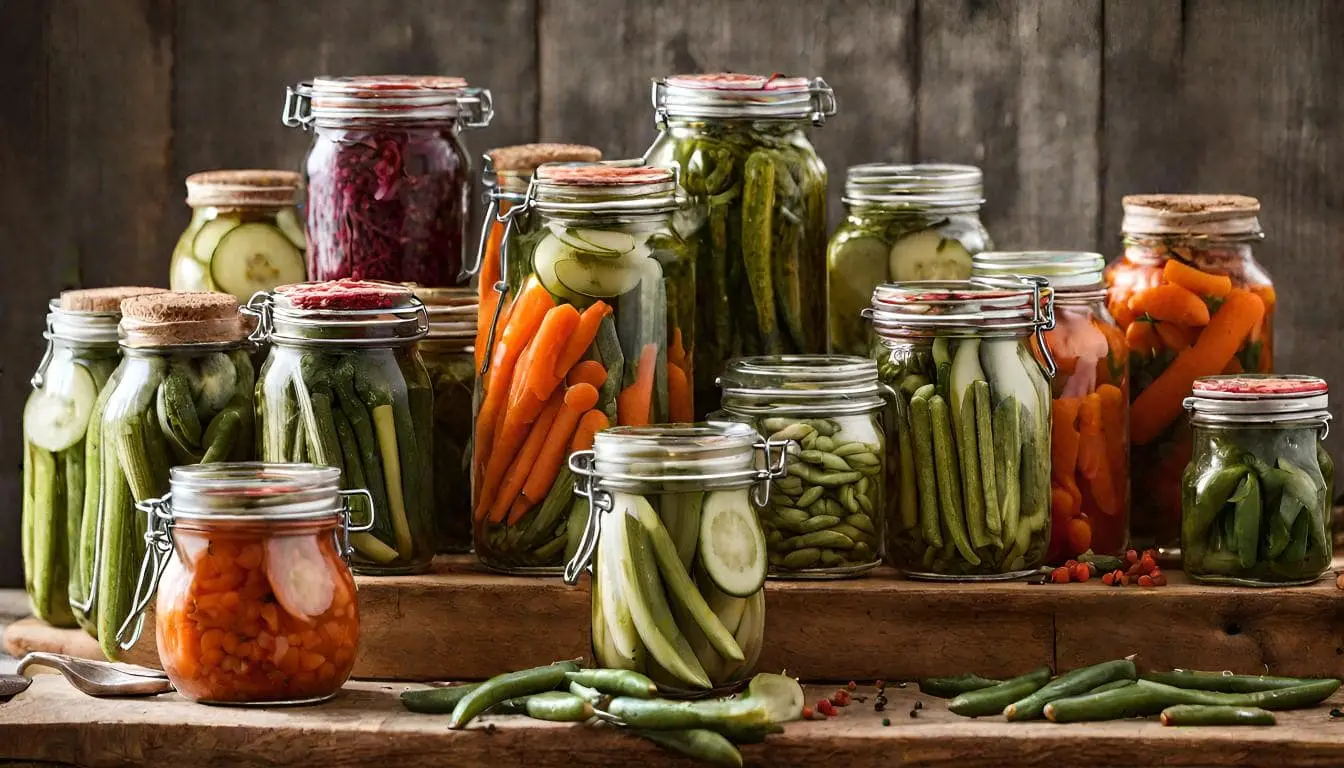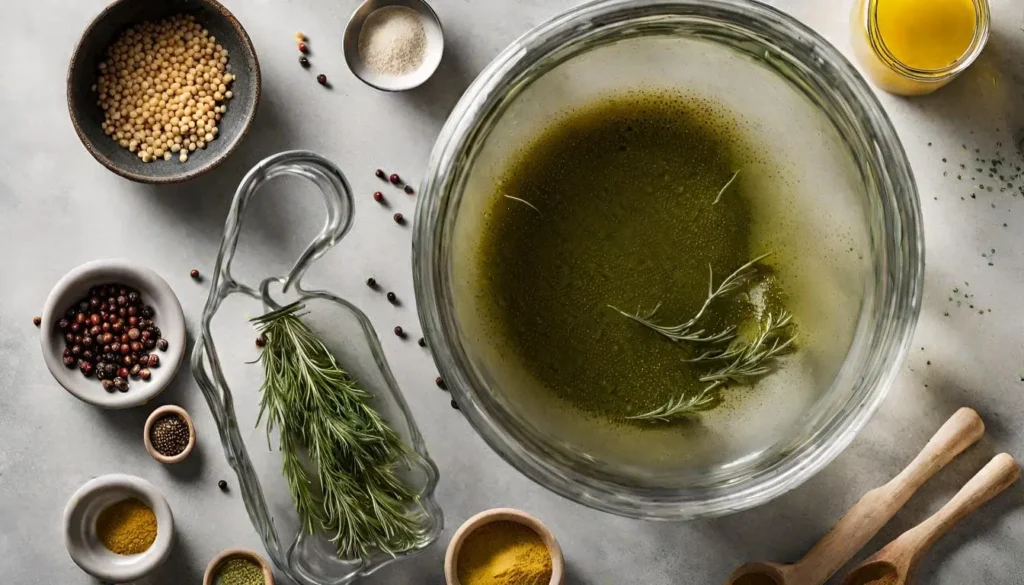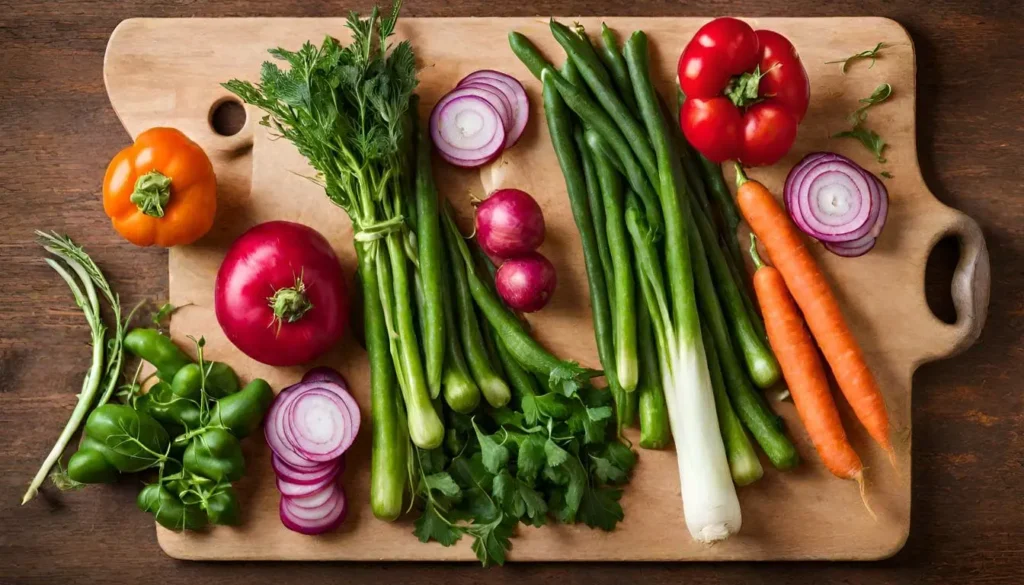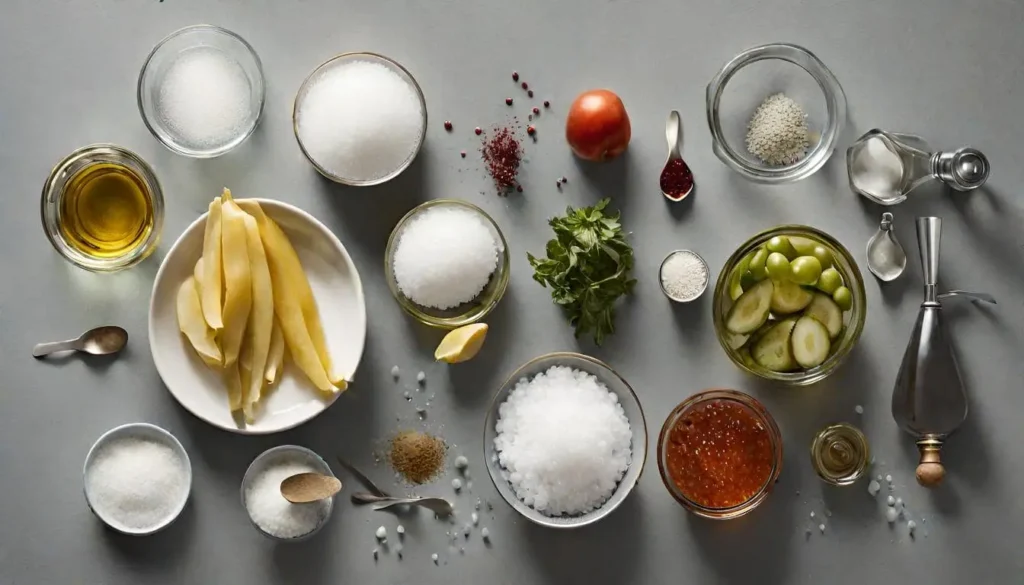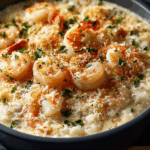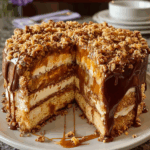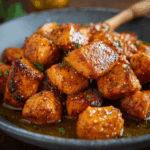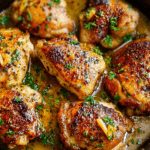Introduction to Quick Pickle Recipes
Quick Pickle Recipes, or the art of making refrigerator pickles, is a simple yet profound way to preserve the bounty of the season. Unlike their fermented counterparts, quick pickles don’t require the patience of long curing times or the intricacies of canning. Instead, they offer an immediate gratification that marries the freshness of your favorite vegetables with the acidic punch of vinegar, all within a matter of days, if not hours.
The essence of quick pickle recipes lies in its versatility. Whether you have a surplus of cucumbers, a bunch of vibrant carrots, or even the humble green beans, quick pickling transforms these everyday ingredients into gourmet delights. The process is straightforward, requiring only a few key ingredients like vinegar, water, salt, and a touch of sugar. Add to this a concoction of spices and herbs, and you’ve got yourself a custom blend of pickles that can elevate any meal.
But why opt for quick pickling? For starters, it’s an excellent way to reduce waste and extend the shelf life of produce. Moreover, it allows you to experiment with flavors, creating a range of condiments that are as unique as they are delicious. From sweet and tangy to spicy and savory, the flavor profiles are as varied as the ingredients themselves.
Essential Ingredients for Quick Pickle Recipes
At the heart of any quick pickle recipe lies a quartet of fundamental ingredients: vinegar, water, salt, and sugar. These four musketeers work in harmony to create a brine that transforms ordinary veggies into crunchy, flavorful delights.
- Vinegar: The soul of the pickle, vinegar is what gives pickles their characteristic tang. While white vinegar is a classic choice, don’t shy away from experimenting with apple cider, rice, or even balsamic vinegar for a unique twist.
- Water: Acting as the canvas for the other ingredients, water dilutes the vinegar to a palatable acidity. The ratio of water to vinegar can vary, but a 1:1 ratio is a good starting point for those new to the pickling scene.
- Salt: This isn’t just your regular table salt; we’re talking about pickling or kosher salt. Salt not only seasons the brine but also helps crisp up the vegetables. It’s a crucial player in the pickling game.
- Sugar: Adding a hint of sweetness, sugar balances the acidity of the vinegar and the saltiness, rounding out the flavors. Feel free to adjust the amount based on your preference for a sweeter or more savory pickle.
Choosing the Right Vegetables for Pickling
When it comes to pickling, not all vegetables are created equal. The best candidates are those that boast a natural crunch and aren’t too ripe. Cucumbers are the quintessential pickling veggie, but the world of quick pickles is vast and varied.
- Cucumbers: The classic choice, but for a twist, try different varieties like Persian or English cucumbers.
- Carrots, Green Beans, and Asparagus: These veggies pick up the brine flavors beautifully and maintain their satisfying crunch.
- Radishes and Beets: Add a pop of color and a peppery or earthy note to your pickle assortment.
- Cauliflower and Broccoli: These can turn into surprisingly tasty pickled treats with the right spices.
Remember, freshness is paramount. Choose the crispest, most vibrant veggies you can lay your hands on, and you’re halfway to pickle perfection.
Equipment Needed
You won’t need an arsenal of specialized equipment to start your quick pickling journey, but a few basics are non-negotiable.
- Jars: Glass jars with tight-fitting lids are ideal for storing your pickles. Mason jars are a popular choice, but any clean, food-safe jar will do.
- Measuring Cups and Spoons: Accuracy is key when concocting your brine, so these tools are essential.
- A Saucepan: Needed for heating up your brine and dissolving the salt and sugar.
- A Funnel (optional): This can make transferring your brine into jars a splash-free affair.
With these essentials at your fingertips, you’re all set to embark on a quick pickling adventure. The process is a delightful blend of science and art, allowing for endless experimentation. So, grab your ingredients, pick your produce, and let’s get pickling! Remember, the joy of quick pickling lies not just in the delicious results but in the journey of flavors you’ll discover along the way.
Washing and Cutting Vegetables
First and foremost, cleanliness is paramount. Start by thoroughly washing your vegetables under cold running water to remove any dirt or debris. This step is essential for ensuring that your pickles are safe to eat and free of any unwanted grit.
Next, consider how you cut your vegetables, as this can significantly affect their pickling outcome. The goal is to maximize surface area for the brine to penetrate, ensuring that each bite is infused with flavor. For cucumbers, slicing them into spears or rounds is popular. Carrots and zucchini can be julienne or cut into coins, while cauliflower and broccoli florets are best left in bite-sized pieces. The key is consistency; uniform pieces not only pickle at the same rate but also make for a visually appealing jar.
Blanching Vegetables for Better Color Retention (Optional)
Blanching, a quick dip in boiling water followed by an ice bath, is a step you might consider for certain vegetables. This technique can help in retaining the vibrant colors of green veggies like green beans, asparagus, and broccoli, making your pickles look as good as they taste. While not strictly necessary, it can add a professional touch to your homemade pickles, ensuring they’re as pleasing to the eye as they are to the palate.
Importance of Freshness for Optimal Results
Perhaps the most crucial aspect of preparing vegetables for pickling is the freshness of the produce itself. Freshness is the cornerstone of crisp, flavorful pickles. Vegetables that are past their prime can result in pickles that are limp and lackluster in taste. For the best results, choose vegetables that are firm, vibrant, and free of bruises or soft spots. The fresher the produce, the crisper and more delicious your pickles will be.
By taking the time to properly prepare your vegetables, you’re ensuring that your pickling efforts yield the best possible results. Whether you’re a novice or a seasoned pickler, the care you put into this initial step will shine through in the crunch and flavor of your finished pickles. So, wash, cut, and optionally blanch your veggies with care, and get ready to transform them into quick-pickled delights that will elevate any meal.
Creating the Perfect Brine
The brine is the lifeblood of quick pickles, infusing vegetables with flavor and preserving their crunch. Achieving the perfect brine balance is an art form that hinges on the ratio of vinegar to water, the amount of salt and sugar, and the selection of spices and herbs.
- Ratio of Vinegar to Water: A balanced brine typically starts with a 1:1 ratio of vinegar to water. This provides enough acidity for preservation while maintaining a palatable taste. However, this can be adjusted according to personal preference and the type of vegetables being pickled. More acidic vinegars may require more water to soften their bite.
- The Role of Salt and Sugar: Salt is crucial for flavor and helps keep the vegetables crisp by drawing out excess water. Pickling or kosher salt is preferred due to its purity and consistent grain size. Sugar, on the other hand, counterbalances the vinegar’s acidity, adding a subtle sweetness that can enhance the overall flavor profile. The amounts of salt and sugar can be tweaked based on whether you lean towards a sweeter or more savory pickle.
- Adding Flavor with Spices and Herbs: This is where you can get creative with your pickles. Classic spices include mustard seeds, peppercorns, and dill seeds, but don’t hesitate to experiment with coriander seeds, cloves, or even cinnamon sticks for something different. Fresh herbs like dill, tarragon, or bay leaves can add a fragrant touch to your pickles.
Pickling Techniques
Embarking on the quick pickling process is an exciting journey into flavor experimentation. Here’s a simplified step-by-step guide, followed by some tips to ensure your pickles turn out just the way you like them.
- Prepare Your Brine: Combine vinegar, water, salt, and sugar in a saucepan. Bring to a simmer, stirring until the salt and sugar dissolve completely.
- Spice It Up: Add your chosen spices and herbs to the brine, letting them steep for a few minutes to infuse their flavors.
- Prepare Your Jars: Ensure your jars are clean and ready for use. Warm jars can help avoid temperature shock when adding hot brine.
- Pack the Vegetables: Tightly pack your prepared vegetables into the jars.
- Pour the Brine: Carefully pour the hot brine over the vegetables, ensuring they are completely submerged. Leave a bit of headspace at the top of the jar.
- Seal and Cool: Close the jars and let them cool to room temperature before storing them in the refrigerator.
Tips for Ensuring Crispness and Flavor:
- Use crisp, fresh vegetables for the best texture.
- Adding a grape leaf to each jar can help keep cucumbers crisp due to the natural tannins.
- Let your pickles marinate in the fridge for at least 48 hours for the flavors to develop fully.
Variations for Different Vegetables:
- Cucumbers: Ideal for classic dill pickles. Try adding garlic and dill to the brine.
- Carrots: Slice them into sticks and add ginger for a zesty pickled carrot.
- Beans: Green or yellow beans work great with a spicy brine for a crunchy snack.
Remember, the beauty of quick pickling lies in experimentation. Don’t be afraid to play with different vinegar types, adjust the sweetness, or throw in your favorite herbs and spices. The variations are endless, allowing you to create a custom pickle that suits your palate perfectly.
Experimenting with Different Vinegars and Spices
The choice of vinegar is the first decision point in flavoring your pickles. Each type brings its own character to the party:
- White Vinegar: A clean, sharp acidity makes it a versatile choice for any vegetable.
- Apple Cider Vinegar: Offers a fruity tang that pairs well with sweeter pickles.
- Rice Vinegar: Milder and slightly sweet, perfect for Asian-inspired pickles.
- Red or White Wine Vinegar: Introduces a complex, vino-centric tartness ideal for Mediterranean vegetables.
Spices are your next arsenal for flavor. Mustard seeds, peppercorns, and dill are just the starting line. Coriander seeds impart a lemony note, while cloves and cinnamon can introduce a warm, spiced undertone. A slice of fresh ginger or a sprig of rosemary can transform your brine into a bouquet of flavors.
Sweet vs. Savory Pickles
The dance between sugar and salt in your brine decides the lead role in your pickles’ flavor profile. Sweet pickles, often enjoyed alongside sandwiches or as a snack, rely on a higher sugar content. Think bread-and-butter pickles, with their delightful balance of sweetness and tang.
On the other side, savory pickles, such as the classic dill cucumber or spicy pickled carrots, focus on salt and aromatic herbs and spices for their bold and bracing flavors. Garlic, dill, and even hot peppers like jalapeños can add depth and kick to your savory creations.
Creative Combinations for Quick Pickle Recipes
The real fun begins when you start mixing and matching flavors. Here are a few ideas to spark your creativity:
- Asian-inspired Cucumber Pickles: Use rice vinegar, a touch of sugar, sesame seeds, and a splash of soy sauce for a quick pickle that’s perfect with sushi or as a snack.
- Sweet and Spicy Peppers: Combine apple cider vinegar with sugar, garlic, and a mix of sweet and hot peppers for a jar that’s bursting with contrasting flavors.
- Garlic-Dill Green Beans: A classic savory pick, using white vinegar, plenty of fresh dill, and garlic to create a crunchy, flavorful snack.
Storing Quick Pickle Recipes
The key to storing quick pickles is to keep them refrigerated. Once your pickles are cooled to room temperature after being submerged in the brine, seal the jars tightly and place them in the refrigerator. This cold environment is essential for halting the pickling process at the perfect moment, preserving the vegetables’ crunch and the brine’s flavor profile.
Shelf Life of Quick Pickle Recipes
Quick Pickle Recipes, unlike their canned counterparts, have a shorter shelf life due to their lack of a sterilization process. Typically, they can be enjoyed for up to two months when stored correctly in the refrigerator. Always check for signs of spoilage, such as off smells or colors, before consuming.
Serving Suggestions and Uses in Quick Pickle Recipes
Quick pickles are incredibly versatile, serving as more than just a side dish. Here are a few ideas to inspire your culinary creativity:
- Sandwiches and Burgers: Add a crunchy, tangy element to sandwiches and burgers with slices of pickled cucumbers or onions.
- Salads: Chop your pickles and toss them into salads for an extra burst of flavor.
- Charcuterie Boards: Quick pickles are a delightful addition to any cheese or charcuterie board, offering a refreshing contrast to rich cheeses and meats.
- Cooking Ingredient: Use the pickled vegetables and their brine to enhance the flavors in dressings, marinades, or even as a zesty addition to cooked dishes.
Frequently Asked Questions
Can I Reuse the Brine for Another Batch of Pickles?
Reusing brine is a topic of much debate among pickle enthusiasts. While it might be tempting to give your brine a second life with a fresh batch of vegetables, there are a few considerations. The primary concern is that the brine’s effectiveness diminishes after its first use, meaning it might not preserve the second batch as well, potentially affecting flavor and crispness. Additionally, the balance of acidity may change after the first batch, which can impact safety. If you do decide to reuse brine, it’s best used for marinating rather than pickling, and always ensure it’s boiled before reusing to kill any bacteria.
How Long Do I Need to Wait Before My Quick Pickles Are Ready?
The beauty of quick pickles is in their name; they’re quick! Generally, you’ll want to wait at least 24 hours before diving into your batch to allow the flavors to meld fully. However, waiting two to three days can often result in an even more developed taste profile. The longer the vegetables sit in the brine, the more pronounced the pickled flavor becomes, so patience can indeed be a virtue when it comes to quick pickling.
Are Quick Pickles as Healthy as Fermented Pickles?
Quick pickles and fermented pickles offer different health benefits due to their preparation methods. Fermented pickles, created through a process that encourages natural bacteria to produce lactic acid, can introduce beneficial probiotics into your diet, supporting gut health. Quick pickles, on the other hand, rely on vinegar for their tangy taste and do not undergo fermentation, meaning they lack probiotics. However, they still provide the nutritional benefits of the vegetables used, including vitamins and minerals, and can be a healthier alternative to processed snacks. Both types can be part of a healthy diet, offering distinct flavors and benefits.

